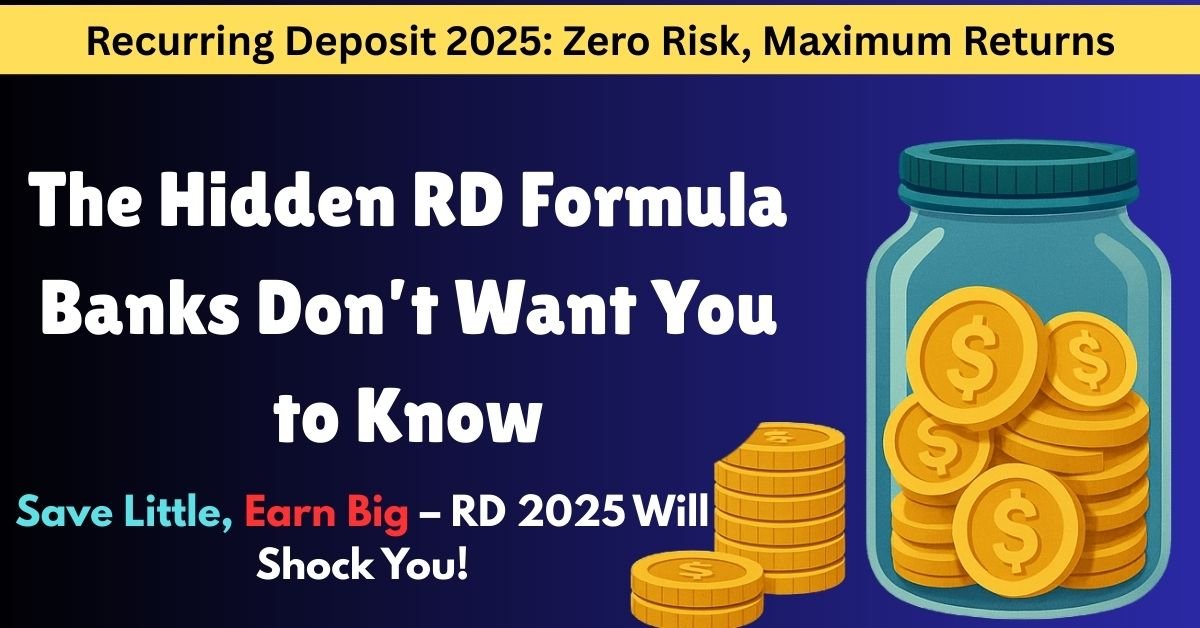Recurring Deposit: One of the finest financial instruments to save money on a regular basis and receive a fixed interest is A Recurring Deposit (RD). RD is a type of savings account that you can deposit a specific amount each month over a set period and receive more interest than a savings account. It suits the people who prefer strict saving regime and no investment risk.
What is a Recurring Deposit (RD)?
Recurring Deposit is a term deposit which is provided by banks and post offices where you make a monthly commitment to deposit a certain amount of money. The bank will also interest your deposits and at the maturity of the tenure, you will be paid the principal with interest. RD is seen to be very popular among those who are earning a salaried income, students and homemakers since it promotes saving regularly with assured income.
Key Features of Recurring Deposit
- Fixed Monthly Contribution: You deposit a fixed amount each month, as per your financial capacity.
- Flexible Tenure: RD tenure usually ranges from 6 months to 10 years, depending on the bank or post office.
- Guaranteed Interest: RD interest rates are higher than a savings account and are fixed for the tenure.
- Premature Withdrawal: You can withdraw before maturity, but banks may charge a penalty.
- Low Risk Investment: RDs are safe because they are backed by banks and post offices.
- Loan Against RD: Many banks allow you to take a loan using your RD as collateral.
Benefits of Investing in Recurring Deposit
- Disciplined Savings: RD encourages monthly saving, which builds financial discipline.
- Guaranteed Returns: Unlike stock market investments, RD offers assured returns.
- Flexible Investment: You can choose the monthly deposit amount and tenure as per your goals.
- Tax Benefits: Some banks offer tax-saving RDs under Section 80C of the Income Tax Act.
How to Calculate RD Maturity Amount
The maturity amount depends on your monthly deposit, interest rate, and tenure. Banks often provide an RD calculator, but the formula for calculating the maturity amount is: M=P×(1+r/n)n∗t−11−(1+r/n)−1/nM = P \times \frac{(1 + r/n)^{n*t} – 1}{1 – (1 + r/n)^{-1/n}}M=P×1−(1+r/n)−1/n(1+r/n)n∗t−1

Where:
- MMM = Maturity amount
- PPP = Monthly deposit
- rrr = Annual interest rate
- nnn = Compounding frequency (quarterly usually)
- ttt = Time in years
For example, if you deposit ₹5,000 per month at an interest rate of 6.5% for 2 years, your RD maturity amount will be approximately ₹1,27,000.
Who Should Invest in RD?
- Salaried employees who want safe and regular returns.
- Students saving for higher education.
- Homemakers and retirees seeking risk-free investment options.
- Anyone looking for a financially disciplined investment plan.
Tips to Maximize RD Benefits
- Compare interest rates across different banks and post offices.
- Opt for longer tenure if you want higher returns.
- Set up auto-debit for monthly contributions to ensure discipline.
- Consider tax-saving RDs if you want to save on taxes.
Conclusion
Recurring Deposit (RD) is a brilliant option when someone wants to save with the aim of low risk, high returns, and disciplined savings. RDs enable you to accumulate wealth gradually with flexible tenure, guaranteed interest and easy withdrawals. Whatever your priorities are, be it short-term or long-term financial stability, RD is the charm that will get you there.
Braj Verma is a resident of Rajgarh in Madhya Pradesh and is a content writer and freelancer by profession. He has a degree in Political Science from Barkatullah University, Bhopal. He has expertise in subjects like credit cards, banking, loan, insurance, political analysis and digital marketing.

